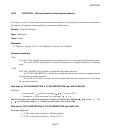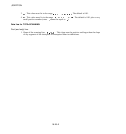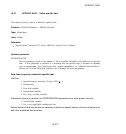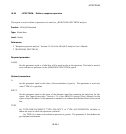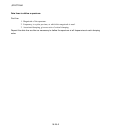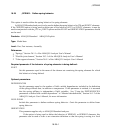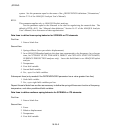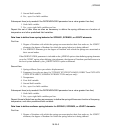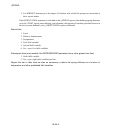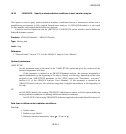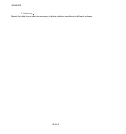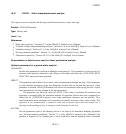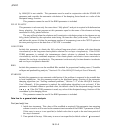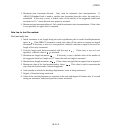*
SPRING
5. Second field variable.
6. Etc.,uptofivefieldvariables.
Subsequent lines (only needed if the DEPENDENCIES parameter has a value greater than five):
1. Sixth field variable.
2. Etc., up to eight field variables per line.
Repeat this set of data lines as often as necessary to define the spring stiffness as a function of
temperature and other predefined field variables.
Data lines to define lin ear spring behavior for SPRING1, SPRING2, o r JOINTC elements:
First line:
1. Degree of freedom with which the springs are associated at their first nodes or, for JOINTC
elements, the degree of freedom for which the spring behavior is being defined.
2. For SPRING2 elements give the degree of freedom with which the springs are associated at
their second nodes.
If the ORIENTATION parameter is included on the
*
SPRING option when defining springelements
or on the
*
JOINT option when defining joint elements, the degrees of freedom specified here are in
the local system defined by the
*
ORIENTATION option referenced.
Second line:
1. Spring stiffness (force per relative displacement).
2. Frequency (in cycles per time, for
*
STEADY STATE DYNAMICS, DIRECT and
*
STEADY
STATE DYNAMICS, SUBSPACE PROJECTION analyses only).
3. Temperature.
4. First field variable.
5. Second field variable.
6. Etc.,uptofivefieldvariables.
Subsequent lines (only needed if the DEPENDENCIES parameter has a value greater than five):
1. Sixth field variable.
2. Etc., up to eight field variables per line.
Repeat this set of data lines as often as necessar y to define the spring stiffness as a function of frequency,
temperature, and other predefined field var iables.
Data lines to define nonlinear spring behavior for SPRIN G1, S PRING2, or JOINTC elements:
First line:
1. Degree of freedom with which the springs are associated at their first nodes or, for JOINTC
elements, the degree of freedom for which the spring behavior is being defined.
18.29–3
ABAQUS Version 6.1 Module:
ID:
Printed on:



